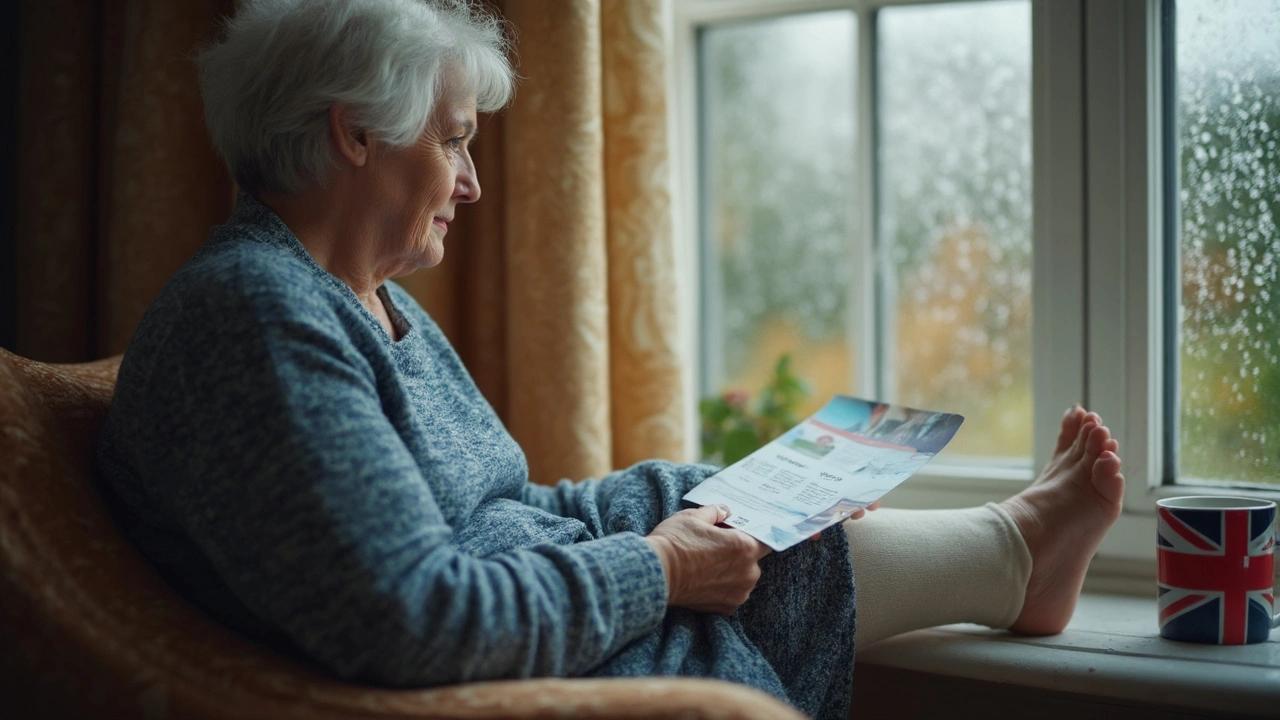Oedema: Causes, Signs, and What You Can Do
Oedema means extra fluid trapped in body tissues. You usually notice swelling in the feet, ankles, legs, or hands, but it can happen anywhere. It can be painless and mild, or sudden and serious. Knowing common causes and simple steps you can take helps you decide when to wait and when to see a doctor.
Fluid builds up when balance between blood vessels and tissues shifts. Common causes include heart failure, kidney problems, liver disease, chronic venous insufficiency, lymphatic blockage, and some medications. Steroids, certain blood pressure drugs (like calcium channel blockers), NSAIDs, and some diabetes medicines can cause fluid retention. Pregnancy often brings mild oedema, especially late in gestation, while sudden one-sided swelling may point to a blood clot.
Simple checks and home steps
Start by comparing both sides of the body. Pressing a swollen area for a few seconds can reveal pitting oedema — a temporary dent under your finger. Note timing: swelling that worsens during the day but improves after rest is often venous. Keep a small diary: when swelling started, whether it is painful, and any new medicines. For everyday relief, raise the swollen limb above heart level for 20–30 minutes several times daily. Reduce salt in your diet if your doctor agrees, wear fitted compression socks for leg swelling, and avoid long standing or sitting. Regular walking helps calf muscles pump fluid back toward the heart.
Medical checks and treatments
If swelling comes on suddenly, is painful, affects breathing, or is accompanied by weight gain, see a doctor right away. Your clinician may order blood tests, urine tests, an ultrasound of the legs for clots, chest X-ray or echocardiogram for heart problems, and liver function tests. Treatment targets the cause: diuretics (water pills) are common for heart or kidney-related oedema. If a medicine is responsible, your prescriber may change the drug. For chronic lymphedema, specialists use manual drainage, compression bandaging, and skin care to prevent infections.
Small lifestyle moves often help long-term. Lose extra weight, cut back on alcohol, sleep with legs slightly elevated, and check shoes for fit to avoid pressure points. If you have heart or kidney disease, follow your specialist’s plan for fluid and salt intake and take medications as directed. Carry a list of current medicines when you visit the clinic—this helps spot drugs that cause retention.
Questions to ask your doctor: What likely caused my oedema? Do I need tests now? Is this medicine causing it and can we change it? When should I return or seek emergency care? Clear answers help you avoid unnecessary worry and know the next steps.
Some simple measures used in clinics can speed recovery. Doctors may suggest daily weight checks to monitor fluid, temporary low-salt meal plans, and tailored exercise like ankle pumps. For severe cases they might adjust heart or kidney meds or refer you to a vascular or renal specialist. Ask if a referral to a physiotherapist for compression fitting makes sense for your situation.
Understanding Oedema: Peripheral, Cerebral, And Pulmonary Swelling Explained
Curious why your ankles puff up or how the brain can swell dangerously? This article unpacks the three main types of oedema—peripheral, cerebral, and pulmonary. It digs into what makes each unique, symptoms to watch for, and tips on managing or preventing swelling. You'll find real tips, eye-opening facts, and clear insights on why oedema happens and what can be done about it. With everything from stats and risk factors to day-to-day advice, it's your go-to guide for understanding and handling serious swelling.
- View More
- 12

